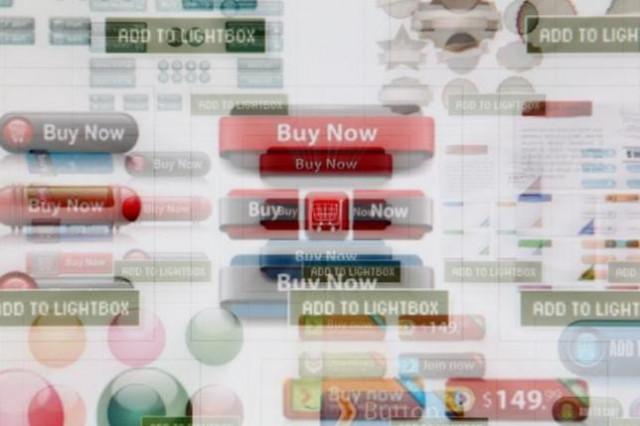You'll never guess what the first thing sold on the internet was
Shopify, an e-commerce software company, reveals the first e-commerce transaction was made in 1994

A zoomed image of a computer monitor shows a website selling button clipart for online shops. PHOTO: REUTERS
Shopify, an e-commerce software company, has revealed the first e-commerce transaction was made in 1994.
Black Friday online shopping rivals stores: US survey
Delving into the history of internet to track down the first official e-commerce transaction, Shopify reveals the trail began on the ARPANET with a 1971 deal between computer science students at Stanford and MIT to buy cannabis. However, the narrator explained it technically cannot be counted as an online transaction since money was not exchanged online but was only used to arrange a meeting place.
The trail then leads to 1984 when a 74-year-old British grandmother named Jane Snowball used Videotex, essentially a TV connected to telephone lines, to order groceries from her local grocery store. However, this case cannot be classified as e-commerce either as the groceries were delivered by hand and Snowball paid for them in cash upon delivery.
Black Friday focus goes online as Britons hunt bargains
Hence, the first true e-commerce transaction didn’t happen until 1994.
Although, Pizza Hut is often credited for the first e-commerce transaction as the fast food chain started selling pizzas online in late August 1994, it was Dan Kohn’s New Hampshire-based website NetMarket that deserves credit.
On August 11, 1994, Kohn sold a CD of Sting’s ‘Ten Summoner's Tales’ album to a friend in Philadelphia, who used his credit card to spend $12.48, plus shipping costs, in a transaction that, for the first time ever, was protected by encryption technology.
"Even if the NSA was listening in, they couldn't get his credit card number," Kohn told Peter Lewis of the New York Times in an article the following day about NetMarket.
The site required customers to download a special browser that ran only on Unix in order to conduct secure transactions.
Philip Zimmermann, the creator of the PGP encryption standard that NetMarket relied on, told NYT that the technology was a significant stepping stone towards digital currencies. "I think it's an important step in pioneering this work, but later on we'll probably see more exciting things in the way of digital cash... a combination of cryptographic protocols that behave the way real dollars behave but are untraceable."
E-transactions: IT ministry reviews e-payment gateway
However, not everyone agrees on the NetMarket milestone.
The Internet Shopping Network, which began selling computer equipment online in 1994, beat NetMarket by about a month, the site's former CEO, told CNet in 2004. While CDconnection.com claims on its home page to have been selling CDs online since 1990. Meanwhile, a form of non-secure online shopping was already happening in Europe in the 1980s, thanks to a slew of terminal-based services like France's Minitel and Germany's Bildschirmtext, which offered banking, stock prices, and weather reports, as well as air and train tickets. In the US, early Internet users could use services like Prodigy, CompuServe, and AOL to conduct transactions.
This article originally appeared on Fast Company.





1724148693-0/BeFunky-collage]_____-(24)1724148693-0-208x130.webp)













COMMENTS
Comments are moderated and generally will be posted if they are on-topic and not abusive.
For more information, please see our Comments FAQ